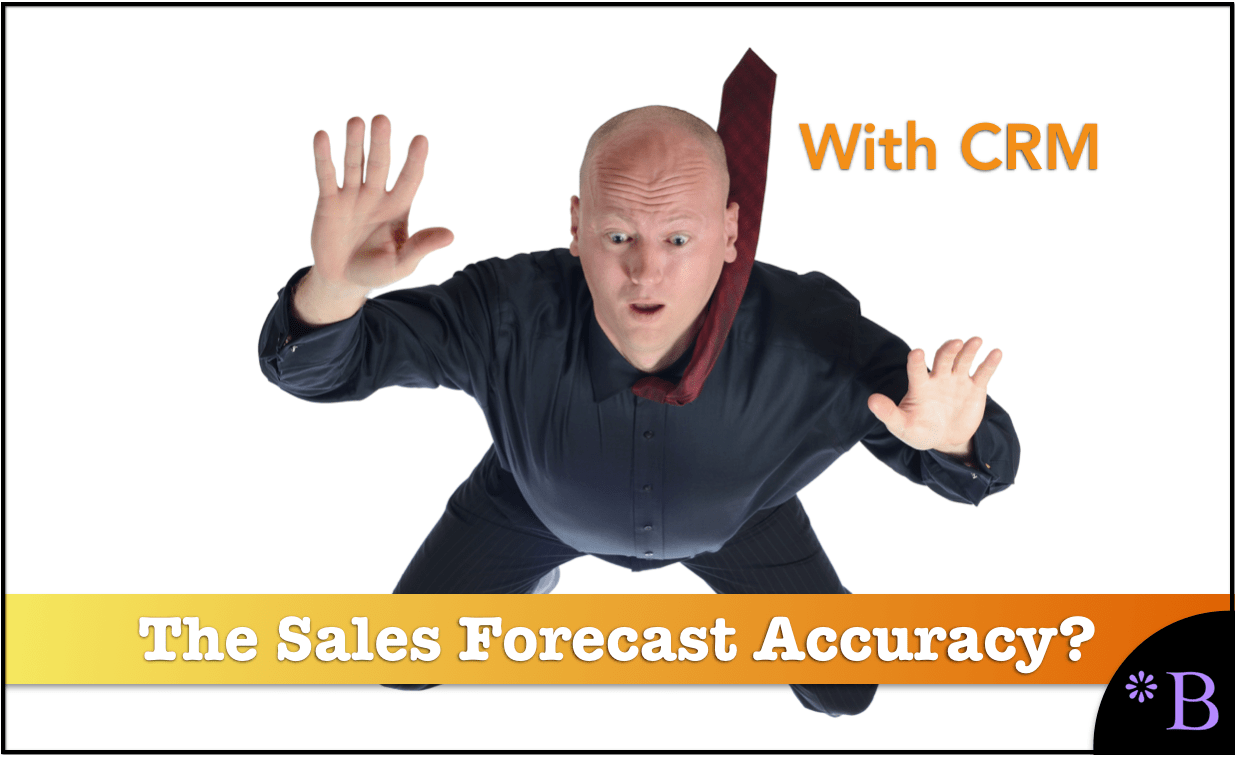Is Your CRM System Increasing Sales Forecast Error?
Executive Summary
- CRM vendors state that their applications increase sales forecast accuracy.
- We question this proposal by CRM vendors and ask for evidence.

Introduction
This article discusses one strong reason why CRM systems have such a problem earning a positive return on investment, which may be related to forecasting.
Our References for This Article
If you want to see our references for this article and related Brightwork articles, visit this link.
Comparing CRM to Other Application Categories
We cover ten categories of enterprise software. Like tier 1 ERP, some applications will often negatively return on investment, which means the application. The long-term issues that ERP has with ROI are the book The Real Story Behind ERP: Separating Fiction from Reality. An ERP application may have a seven-year TCO of $20,000,000 and only pay back $18,000,000, thus having a negative ROI. CRM is the only software category that I have analyzed where the question comes up if CRM worsens the company’s position and netting it a negative ROI.
Forecasting: The Achilles Heel of CRM Systems
CRM systems have grown very rapidly in purchases and use over the past two decades and are now one of the most purchased enterprise systems. And along the way, CRM systems took on the role of being the primary sales forecasting systems. Yet, they were not developed with the functionality to take on the role. The people who bought them did not research the forecasting feature thoroughly, and CRM systems directly inherited the role as they became the primary systems used by sales teams.
This is described in the following quotation from Michael McGowan:
Accurate forecasting is a statistically-based process, so you need a pretty smart tool to do it.
And even if existing sales automation products contained such tools, the software is usually so clunky to use that the sales people won’t enter any data in the first place.
What Do You Get in CRM Forecasting Functionality?
I have analyzed all the major CRM systems for the book Sales and Statistical Forecasting Combined. I found that these systems provide the ability to enter and change forecasts, the sales team’s ability to see forecasts and note the reasons for changes.
Yet, that is about the extent of the functionality that CRM vendors have placed on their applications.
There are, of course, all other types of process issues related to the common issues with sales forecasts, which are quite well documented. From the software side, CRM systems have not improved sales forecast accuracy, and by analyzing them, it is easy to see why.
As companies have come to rely on CRM systems for forecasting, they are rarely discussed because they are very obviously not up to the task. Yet, CRM vendors continually promote the ability of their CRM system to improve sales forecast accuracy.
CRM Systems: Sales Forecasting Pretenders
When an application category is assumed to do something well that it can’t, then the implementing company will lose capabilities. This is the primary reason why the implementation of a CRM system can adversely affect a company.
There is a way to rectify this problem.
Conclusion
CRM systems have not done the trick on sales forecasting.
Sales forecasting is often ranked as one of the top issues for sales teams, and CRM systems are not up to the task. Sales management should consider moving the sales forecast away from CRM (although the forecast can still be uploaded to CRM for sales management to view) and using an application that can adequately perform sales forecasting. This means two things:
- Obtaining an Application: This does not need to mean a lot of money; there are plenty of inexpensive applications that can be used for sales forecasting. I have a few I can recommend depending on some fundamental questions.
- Sales Operations Responsibility: Either was adding the responsibility for the application to the role of sales operations or adding sales operations resources if one does not exist. Interestingly if you look at job descriptions for people in sales operations, forecasting combined with a CRM application is the most common requirement. That is, sales teams are not even aware of themselves that not all sales forecasting should be performed in CRM.
A Better Approach to Forecast Error Measurement
The vast majority of companies do not measure the forecast accuracy of their CRM forecast inputs. This means that CRM systems end up providing a steady stream of inaccurate forecasting inputs to the final forecast.
Observing ineffective and non-comparative forecast error measurements at so many companies, we developed the Brightwork Explorer, too, in part, have a purpose-built application that can measure any forecast and compare this one forecast versus another.
The application has a very straightforward file format where your company’s data can be entered, and the forecast error calculation is exceptionally straightforward. Any forecast can be measured against the baseline statistical forecast — and then the product location combinations can be sorted to show which product locations lost or gain forecast accuracy from other forecasts.
This is the fastest and most accurate way of measuring multiple forecasts that we have seen. We have incorporated this forecast error measurement along with automated forecast testing functionality into the Brightwork Explorer. See the explanation below.